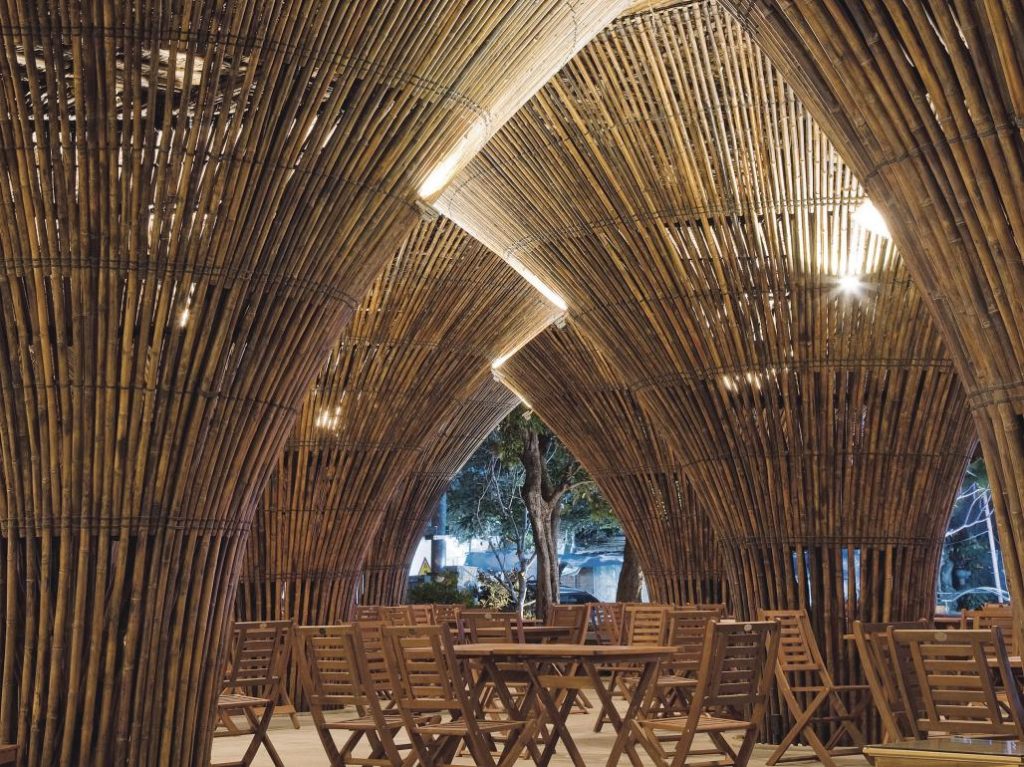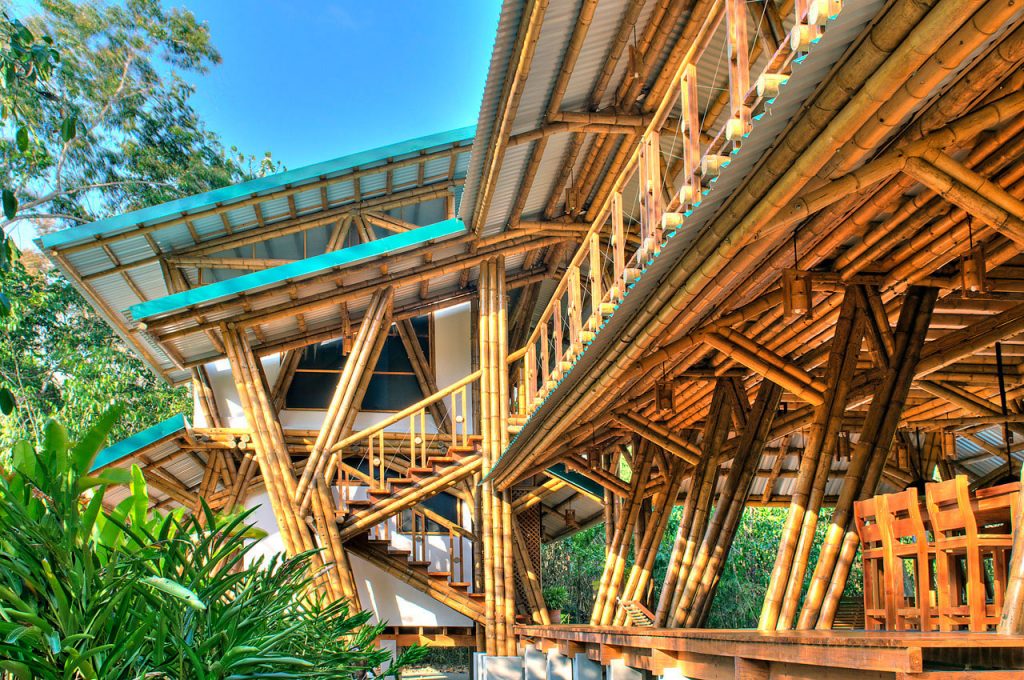It is a versatile crop. It can be used in 1,500 different ways including as food, a substitute for wood, building and construction material, for handicrafts and paper. Intriguingly, it’s from the grass family and known as Bamboo.
India is the world’s second-largest cultivator of bamboo after China, with 136 species and 23 genera spread over 13.96 million hectares. According to the Union Ministry of Agriculture and Farmer Welfare, India’s annual bamboo production is estimated at 3.23 million tonnes. However, despite all this, the country’s share in the global bamboo trade and commerce is only four per cent.
There is a wide gap between demand and supply due to overexploitation, poor regeneration, low productivity and lack of market information. In November 2017, the government recognised bamboo as grass to encourage trade. Till then the Indian Forest Act, 1927 defined bamboo as a “tree” bamboo grown outside forests was subject to regulatory rules of felling and transportation. Despite the efforts of the National Bamboo Mission, new plantation work was stalled as funds were released only for the maintenance of bamboo plantations.
Developing bamboo as a load-bearing structural element would pave the way for its high-value application in construction, which can make bamboo cultivation an economically viable way of greening the vast wastelands. Land degradation is a major problem confronting India. According to the State of India’s Environment 2017, nearly 30 per cent of India’s land is degraded. With its unique ability to stitch and repair damaged soils, bamboo is ideal for rehabilitating degraded soil.

Manifold advantages
According to K.C. Koshy, formerly head of Plant Genetic Resources Division of the Kerala-based Jawaharlal Nehru Tropical Botanic Garden & Research Institute though the country’s bamboo cover is mostly concentrated in the North-Eastern states, all states hold promise for bamboo cultivation, specifically the Western Ghats region, a significant source of moisture for monsoon and which runs along the west coast of peninsular India.
The advantage of bamboo is manifold compared to monoculture tree plantations. After planting, bamboo clumps start yielding after 4-7 years. It can become part of agroforestry practice in small landholdings. New bamboo plantations may curb the pressure from deforestation by serving as wood substitutes. It can be planted to reclaim severely degraded sites and wastelands. It is a good soil binder owing to its peculiar clump formation and fibrous root system and hence also plays an important role in soil and water conservation.
Besides its role in enhancing livelihoods, bamboo has the potential to sequester carbon from the atmosphere. India’s per person emission of carbon dioxide was 1,730 kg a year in 2014 and had risen to1,900 kg in 2016. According to Bharathi Namby, an agricultural scientist it would take just five bamboo plants a year to make India carbon-neutral because each of them absorbs about 400 kg of CO2 a year. Namby who has developed a high-density bamboo variety called Beema (Bambusabalcooa) says that India’s average yield was about half a tonne per acre. Through tissue culture and fertilisation, this has risen to 40 tonnes per acre.
Indeed, a body of evidence is emerging that shows bamboo captures carbon quickly, while it also rapidly rejuvenates degraded lands, restoring soil fertility. With most of India’s designated forest lands degraded, planting bamboo can be the first stage in long-term agroforestry and agricultural redevelopment,
xscientists say. The latest report from INBAR (International Bamboo and Rattan Organisation), an intergovernmental organisation of 43 countries emphasises the point.
The speed with which a plant grows has a part in determining how much carbon dioxide it can absorb in a given time. In a paper submitted at the National Workshop on Global Warming and its Applications for Kerala, researchers of Thrissur-based College of Forestry say, “Bamboo potentially acts as a valuable sink for carbon storage, and on an average, one hectare of bamboo absorbs about 17 tonnes of carbon per year.”
Bamboo can grow at the rate of up to 1.2m a day making it one of the fastest-growing plants. Due to this, it takes only three years to establish mature groves. As a result, bamboos are effective carbon dioxide absorbers, not only above-ground carbon (AGC), but also below-ground carbon (BGC) in roots, and rhizomes. To a lesser extent, it absorbs soil organic carbon (SOC) too. Importantly, growing out of a tangle of underground stems, bamboo can help reforest landscapes denuded by development or natural disasters, binding topsoil to prevent erosion.
Dr Hemant Bedekar, a botanist by education and horticulturist by profession, and executive director of Bamboo Society of India (Maharashtra Chapter) believes a hands-on approach needs to be taken to bring more lands, be it wastelands, river banks and basins under bamboo cover. “The country’s research institutes need to step in to conduct multi-location trials on the performance of various species in all or specific agro-climatic zones and based on the results promote them,” he stresses.

A climate change warrior
Efforts to study the role that plants play in climate change mitigation are increasing. Most researchers focus on the promise of large, leafy trees. The bigger the plant, the more carbon dioxide it absorbs. However, increasing evidence points to bamboo being a surprising grassy climate change warrior. Grown as a low-cost sustainable, household-level commercial plantation, it can be introduced, adopted and scaled-up to secure water catchments and protect erodible soils. However, it is essential to keep in mind that afforestation has to have a proper mix of bamboo and other tree varieties.
China has shown the way by increasing its bamboo cover for industrial purposes, unlike India, which has failed to do much despite its large-scale availability. Even the centrally sponsored scheme of National Bamboo Mission (NBM), under the National Mission for Sustainable Agriculture, which has an allocation of INR 129 billion (USD 1.81 billion) in the 2018-19 Union Budget, has no allocation for R&D, despite experts seeking R&D money for decades.
Bamboo has the potential to generate employment and high income, while at the same time significantly reducing greenhouse gas emissions. There is an urgent need to devise ways to absorb excess greenhouse gases from the atmosphere. India is the fourth-largest emitter of greenhouse gases after China, the US, and the European Union. India’s emissions increased by an alarming 4.7% in 2016 compared to the previous year. However, India’s emissions per head are among the lowest in the world. India had told the UN Framework Convention on Climate Change that it would create an additional carbon sink of 2.5-3 GtCO2e (gigatonnes of carbon dioxide equivalent) through afforestation by 2030, as a key part of the targets it set for itself under the 2015 Paris Agreement. But India’s 2018 report to the convention secretariat showed that growing forests is the one area where the country is lagging behind its target.
As for reforestation, afforestation and REDD+ (Reducing Emissions from Deforestation and Forest Degradation)—a forest specific mechanism—are eligible for carbon trading, bamboo afforestation activities can be brought under CSR (Corporate Social Responsibility), making it a people-centric activity rather than the State’s responsibility to meet the 12-year deadline to restrain the rise in planetary temperatures. According to Arun Jyoti Nath, Assistant Professor of Ecology and Environmental Science at Assam University, the evolving REDD+ programme with its positive financial incentives is likely to assist India in reducing its deforestation rates.
“Incorporating bamboo in REDD+ can be seen as an offset scheme within carbon markets and carbon farming,” he says. “Importantly, carbon trading is an important strategy that will facilitate earning of carbon credits. Experts believe that including bamboo in climate change mitigation, adaptation, land restoration and restoration strategies makes national plans more effective and brings a host of climate-smart options.


 [/column]
[/column]